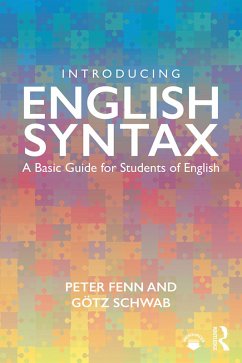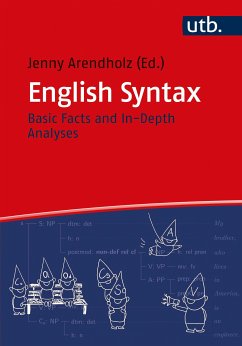
Modern Syntax (eBook, PDF)
A Coursebook

PAYBACK Punkte
15 °P sammeln!
This practical coursebook introduces all the basics of modern syntactic analysis in a simple step-by-step fashion. Each unit is constructed so that the reader discovers new ideas, formulates hypotheses and practises fundamentals. The reader is presented with short sections of explanation with examples, followed by practice exercises. Feedback and comment sections follow to enable students to monitor their progress. No previous background in syntax is assumed. Students move through all the key topics in the field including features, rules of combination and displacement, empty categories, and s...
This practical coursebook introduces all the basics of modern syntactic analysis in a simple step-by-step fashion. Each unit is constructed so that the reader discovers new ideas, formulates hypotheses and practises fundamentals. The reader is presented with short sections of explanation with examples, followed by practice exercises. Feedback and comment sections follow to enable students to monitor their progress. No previous background in syntax is assumed. Students move through all the key topics in the field including features, rules of combination and displacement, empty categories, and subcategorization. The theoretical perspective in this work is unique, drawing together the best ideas from three major syntactic frameworks (minimalism, HPSG and LFG). Students using this book will learn fundamentals in such a way that they can easily go on to pursue further study in any of these frameworks.
Dieser Download kann aus rechtlichen Gründen nur mit Rechnungsadresse in A, B, BG, CY, CZ, D, DK, EW, E, FIN, F, GR, HR, H, IRL, I, LT, L, LR, M, NL, PL, P, R, S, SLO, SK ausgeliefert werden.













